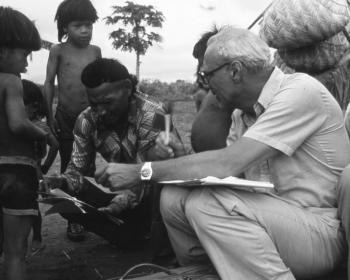
On Tuesday, May 15, 2012, at the 11th session of the UN Permanent Forum on Indigenous Issues in New York, Cultural Survival, Living Tongues Institute, National Museum of the American Indian Film and Video Center, and Underrepresented Nations and Peoples Organization (UNPO) Montagnyard Youth Project are organizing a side-event on language revitalization tools. Join us.
The following is a guest blog post by anthropologist Lisa Maya Knauer, who does fieldwork with Cultural Survival's Guatemala Radio Project and the larger community radio movement in Guatemala.
More than 600 Native American youth from tribes across Oklahoma and beyond gathered this month at the University of Oklahoma’s Sam Noble Museum in Norman for their tenth annual two-day Youth Language Fair.
“Our language is the number one source of our soul, our pride, our being, our strength and our identity.”-- Indigenous Language Instructor, Cultural Survival Quarterly, 2010
Languages are vanishing
Language experts believe that 90% of the world’s estimated 6,000 languages could disappear entirely by the end of this century. Indigenous Peoples face myriad socio-economic pressures and discriminatory policies forcing youth and adults alike to replace tribal languages with the dominant languages of the larger societies in which they live.
By Pete Zrioka
Languages have a history of being lost in the United States. Through the process of cultural assimilation, many immigrants settle here and lose linguistic ties to their home countries in a few generations.
By Terri M. Baker
By Brandon M. Chapman, Ph.D. and John Goodwin
This past weekend Cultural Survival’s Endangered Languages Program Manager Jennifer Weston and Tracy Kelley, Wôpanâak Language Reclamation Project apprentice hosted a day-long workshop on Indigenous language revitalization projects with more than seventy tribal youth at the Montagnyard Pinecroft Learning Center and Church in Greensboro, North Carolina. The high school students are part of an active refugee community numbering more than 4,000, and all speak one or more Indigenous languages originating in the central highlands of Vietnam, and are learning or already speak English.